Soccer players are human beings just like the rest of us.
Even though these professional athletes are able to perform physical feats that most of us regular folk can barely dream of achieving, they experience emotions and feelings exactly like us.
Some of these emotions do make their way into the world’s most popular sport, as evidenced by the highly publicized and ongoing stand to take the knee before matches get underway.
This article will discuss the motivations for this specific action as well as delve deeper into the history and significance of placing one knee on the ground as a supportive gesture.
So, let’s cut right to the chase here.
Soccer players around the world take the knee before games to participate in a silent protest against racial inequality and injustice, as well as to highlight support for the Black Lives Matter movement.
There’s even more context behind this, so let’s explore how the act of taking a knee came to the forefront of the beautiful game.
What is the significance of kneeling?
On the 25th of May 2020, shockwaves reverberated around the world as news broke out about a black man in Minnesota was murdered by a police officer on duty.
George Perry Floyd was an African American man who suffered death whilst being under police custody, something which is pretty much unheard of.
Video footage of his death surfaced, and it showed Floyd struggling to breathe as police officer Derek Chauvin knelt on his neck for approximately nine minutes.
Mr. Chauvin was not immediately charged by the courts for committing second-degree murder, and that verdict in and of itself sparked mass protests across the United States in the ensuing days.
Thousands of people took to the streets to show their anger against police brutality and anti-black violence within the nation.
Many athletes across different sports took notice of this event, but it was the National Football League (NFL) quarterback Colin Kaepernick who made the first move.
Here’s the news clip which shows the NFL player kneeling down as the national anthem is about to start:
In Kaepernick’s own words, he refused to show pride for a country that oppresses black people and those of color:
“I am not going to stand up to show pride in a flag for a country that oppresses black people and people of color. To me, this is bigger than football, and it would be selfish on my part to look the other way. There are bodies in the street and people getting paid leave and getting away with murder.”
Source – Washington Post
Ultimately, Kaepernick’s kneeling action was a pretty effective way of galvanizing people to support protests against racism and oppression within America.
Reasons why soccer players take a knee prior to kickoff
A lot of people resonated with Kaepernick’s gesture, and it had a seismic effect on sports all around the world as athletes from other professions began to take a similar stand.
Here’s why it became popular in soccer.
1. Highlighting racial inequalities and injustices within the game
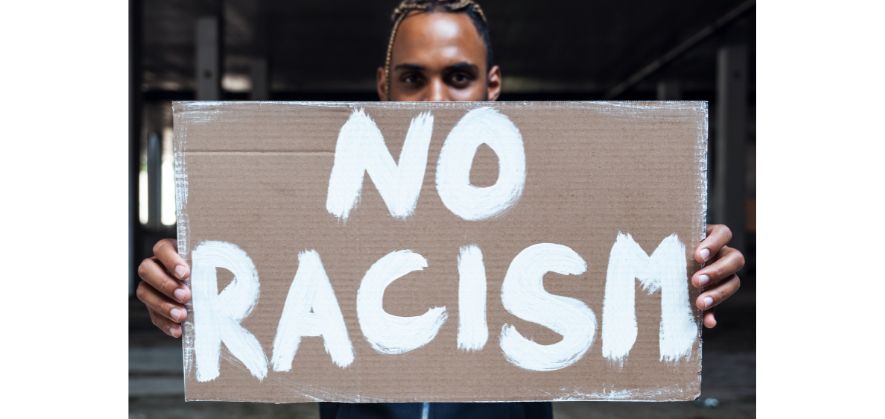
Premier League players started kneeling before kickoff as a way of supporting racial equality.
Time and time again, soccer has had various incidents where black players have suffered from racial profiling.
For example, the legendary right back Dani Alves once had a banana thrown at him when he went up to take a corner kick during a match.
The former Barcelona player handled the situation as well as he could, opting to eat the fruit which was thrown at him by a Villareal fan.
Here’s how that unfolded:
In a similar way, Chelsea’s Senegalese defender Kalidou Koulibaly has previously had monkey chants directed at him by opposition fans when he played for Napoli in Serie A.
And there are many more instances of such racial slurs being aimed at black players on daily basis.
The act of kneeling before kickoff is a way for these players to say enough is enough.
2. Remembering George Floyd
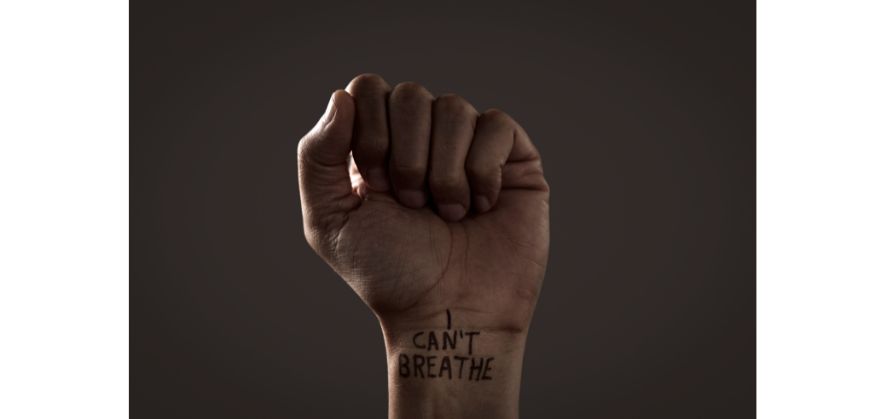
The cruel way in which an innocent American died at the hands of local law enforcement should never be forgotten.
Can you imagine being killed by the very people who by law are supposed to protect and serve you?
That is definitely a scary thought.
Manchester United forward Marcus Rashford usually takes a knee as well as raising his fist to the sky, as a way of recognizing the Black Lives Matter movement and how black people have fought for liberation wherever they are in the world.
Therefore, the act of kneeling before the referee blows his starting whistle isn’t just meant to bring attention to the racism taking place in the game of soccer.
It also serves to highlight the injustices happening in the wider world beyond the sport itself.
This is backed up by its historical meaning as well.
What did taking a knee mean in the past?
Resting on one knee dates back to the civil rights movement in America, when various activists brought attention to the human rights and social injustices that were happening during that time period.
Kneeling was a way of showing solidarity in support of human rights.
And it definitely gained a lot of significance when Martin Luther King took a knee after leading a prayer following the arrest of a protest group during an organized march to the Dallas County Alabama courthouse on February 1, 1965.
Have any footballers refused to take the knee?
Controversially, there are quite a few professional players who don’t take the knee before the start of matches.
Wilfried Zaha
Perhaps the most famous one being Crystal Palace’s Wilfried Zaha.
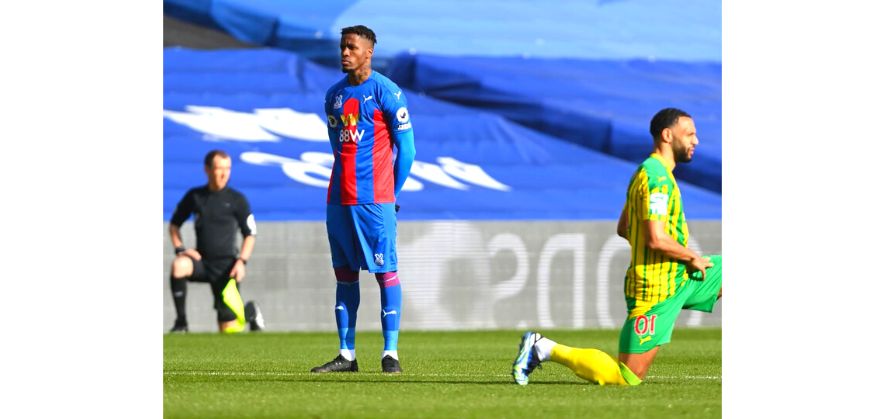
The Ivory Coast international said that the action had lost its meaning and that it had become more of a degrading pre-match routine which dilutes its social impact.
Here’s exactly what he had to say on the matter:
“My decision to stand at kick-off has been public knowledge for a couple of weeks now. There is no right or wrong decision, but for me personally I feel kneeling has just become a part of the pre-match routine and at the moment it doesn’t matter whether we kneel or stand, some of us still continue to receive abuse.”
Source – Sports Illustrated
Zaha is a fairly outspoken player and credit must be given to him for standing up for what he personally believes him.
Truth be told there are many professionals out there who don’t speak out and simply embrace the status quo.
Marcos Alonso
Another player who stopped taking the knee is former Chelsea wing back Marcos Alonso.
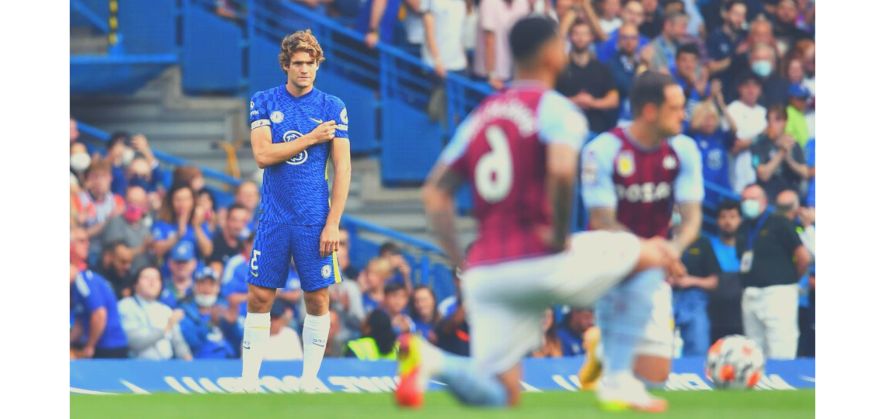
He recently left Stamford Bridge for Barcelona on a free transfer, but before his move he stopped making the gesture citing its “loss of strength”.
Instead, he chose to point towards the anti-racism badge on his sleeve as a way of recognizing the black oppression present in today’s society.
Ivan Toney
Thirdly, Brentford’s Ivan Toney is another player who chose to take a stand instead of kneeling down on one knee.
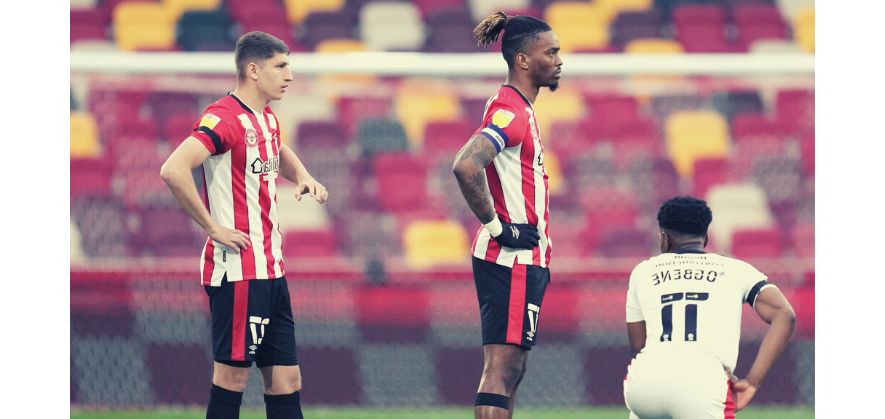
When his club was still in the championship, they put out a message on social media stating that their players would stop taking the knee before kickoff.
Toney himself was quite vocal on the reason why, citing players being used as puppets as the reason why he wouldn’t protest in this way any longer.
Do footballers at European clubs take the knee as well?
Not all players who involved in the game are on the same page when it comes to the stance on kneeling prior to the commencement of competitive fixtures.
This was clearly seen at the European Championships which took place last year, as some teams chose to kneel while others didn’t.
England were one of the nations who chose to take a knee, whereas Croatia were against this with their federation pointing out that players of their national team jointly decided to respectfully stand in silence instead.
At that tournament, players of other countries like Scotland and the Czech Republic also decided against taking the knee.
Closing thoughts
That marks the end of this article on why soccer players kneel prior to the start of games.
It has looked at the history of kneeling as well as covered when the action gathered traction in soccer.
Should you wish to read similar content on the blog, you could have a look at our articles on:
- Why soccer teams exchange banners before the start of matches;
- Why soccer players sometimes wear face masks; and
- Why soccer players walk out with children onto the pitch before kick off
If you enjoy the content that I create and would like to buy me a coffee, then I’d really appreciate it!
Any money that I earn through this donation will be re-invested into more content for this website.
Additionally, by sending in a donation you’ll also receive a copy of my recently released 190+ page eBook on Soccer Ball Care, as well as be subscribed to our mailing list where you’ll be regularly informed on the latest developments concerning the Soccer Whizz blog.
- Future Icons: Europe’s Emerging Midfield Maestros Set for Glory - December 4, 2023
- Kickstarting a Revolution: How Soccer Transformed the United States Over the Last Four Years - October 7, 2023
- 4-1-4-1 Soccer Formation [Analysis] - September 23, 2023

